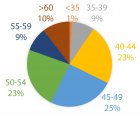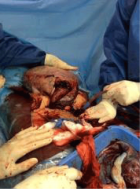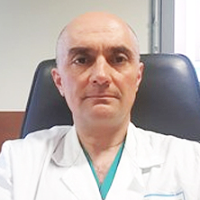Abstract
Review Article
Transglutaminase inhibition: possible therapeutic mechanisms to protect cells from death in neurological disorders
Vittorio Gentile*, Elenamaria Fioretti, Nicola Gaetano Gatta and Rosaria Romano
Published: 25 July, 2017 | Volume 1 - Issue 1 | Pages: 026-038
Transglutaminases are a family of Ca2+-dependent enzymes which catalyze post-translational modifications of proteins. The main activity of these enzymes is the cross-linking of glutaminyl residues of a protein/peptide substrate to lysyl residues of a protein/peptide co-substrate. In addition to lysyl residues, other second nucleophilic co-substrates may include monoamines or polyamines (to form mono-or bi-substituted/crosslinked adducts) or -OH groups (to form ester linkages). In absence of co-substrates, the nucleophile may be water, resulting in the net deamidation of the glutaminyl residue. Transglutaminase activity has been suggested to be involved in molecular mechanisms responsible for both physiological and pathological processes. In particular, transglutaminase activity has been shown to be responsible for human autoimmune diseases, and Celiac Disease is just one of them. Interestingly, neurodegenerative diseases, such as Alzheimer’s disease, Parkinson’s disease, supranuclear palsy, Huntington’s disease and other polyglutamine diseases, are characterized in part by aberrant cerebral transglutaminase activity and by increased cross-linked proteins in affected brains. Here we describe the possible molecular mechanisms by which these enzymes could be responsible for such diseases and the possible use of transglutaminase inhibitors for patients with diseases characterized by aberrant transglutaminase activity.
Read Full Article HTML DOI: 10.29328/journal.hjbm.1001004 Cite this Article Read Full Article PDF
Keywords:
Transglutaminases; Post-translational Modifications of Proteins; Neurodegeneration; NF-kB; Neuroinflammation
References
- Folk JE. Mechanism and basis for specificity of transglutaminase-catalyzed e-(g-glutamyl) lysine bond formation. Adv Enzymol Relat Areas Mol Biol. 1983; 54: 1-56. Ref.: https://goo.gl/MZtXQS
- Lorand L, Conrad S M. Transglutaminases. Mol Cell Biochem. 1984; 58: 9-35. Ref.: https://goo.gl/uAd6qy
- Piacentini M, Martinet N, Beninati S, Folk JE. Free and protein conjugated-polyamines in mouse epidermal cells. Effect of high calcium and retinoic acid. J Biol Chem. 1988; 263: 3790-3794. Ref.: https://goo.gl/47QA8F
- Song Y, Kirkpatrick LL, Schilling AB, Helseth DL, Chabot N, et al. Transglutaminase and polyamination of tubulin: posttranslational modification for stabilizing axonal microtubules. Neuron. 2013; 78: 109-123. Ref.: https://goo.gl/8xamTn
- Achyuthan KE, Greenberg CS. Identification of a guanosine triphosphate-binding site on guinea pig liver transglutaminase. Role of GTP and calcium ions in modulating activity. J Biol Chem. 1987; 262: 1901-1906. Ref.: https://goo.gl/GVXy9h
- Hasegawa G, Suwa M, Ichikawa Y, Ohtsuka T, Kumagai S, et al. A novel function of tissue-type transglutaminase: protein disulfide isomerase. Biochem J. 2003; 373: 793-803. Ref.: https://goo.gl/J7PR9u
- Lahav J, Karniel E, Bagoly Z, Sheptovitsky V, Dardik R, et al. Coagulation factor XIII serves as protein disulfide isomerase. Thromb Haemost. 2009; 101: 840-844. Ref.: https://goo.gl/sCnzMA
- Iismaa SE, Mearns BM, Lorand L, Graham RM. Transglutaminases and disease: lessons from genetically engineered mouse models and inherited disorders. Physiol Rev. 2009; 89: 991-1023. Ref.: https://goo.gl/H9sRQC
- Smethurst PA, Griffin M. Measurement of tissue transglutaminase activity in a permeabilized cell system: its regulation by calcium and nucleotides. Biochem J. 1996; 313: 803-808. Ref.: https://goo.gl/cVYj3d
- Nakaoka H, Perez DM, Baek KJ, Das T, Husain A, et al. Gh: a GTP-binding protein with transglutaminase activity and receptor signalling function. Science 1994; 264: 1593-1596. Ref.: https://goo.gl/NdY8xz
- Gentile V, Porta R, Chiosi E, Spina A, Valente F, et al. tTGase/G alpha h protein expression inhibits adenylate cyclase activity in Balb-C 3T3 fibroblasts membranes. Biochim Biophys Acta. 1997; 1357: 115-122. Ref.: https://goo.gl/zz6rVF
- Nanda N, Iismaa SE, Owens WA, et al. Targeted inactivation of Gh/tissue transglutaminase II. J Biol Chem. 2001; 276: 20673-20678. Ref.: https://goo.gl/nvfyq4
- Mian S, El Alaoui S, Lawry J, Gentile V, Davies PJ, et al. The importance of the GTP binding protein tissue transglutaminase in the regulation of cell cycle progression. FEBS Letters. 1995; 370: 27-31. Ref.: https://goo.gl/ddWehz
- Olaisen B, Gedde-Dahl TJR, Teisberg P, Thorsby E, Siverts A, et al. A structural locus for coagulation factor XIIIA (F13A) is located distal to the HLA region on chromosome 6p in man. Am J Hum Genet. 1985; 37: 215-220. Ref.: https://goo.gl/NvA1Kn
- Yamanishi K, Inazawa J, Liew FM, Nonomura K, Ariyama T, et al. Structure of the gene for human transglutaminase 1. J Biol Chem. 1992; 267: 17858-17863. Ref.: https://goo.gl/JMjQWB
- Gentile V, Davies PJ, Baldini A. The human tissue transglutaminase gene maps on chromosome 20q12 by in situ fluorescence hybridization. Genomics. 1994; 20: 295-297. Ref.: https://goo.gl/oW3hdr
- Wang M, Kim IG, Steinert PM, McBride OW. Assignment of the human transglutaminase 2 (TGM2) and transglutaminase 3 (TGM3) genes to chromosome 20q11.2. Genomics. 1994; 23: 721-722. Ref.: https://goo.gl/AArGWB
- Gentile V, Grant F, Porta R.. Human prostate transglutaminase is localized on chromosome 3p21.33-p22 by in situ fluorescence hybridization. Genomics. 1995; 27: 219-220.
- Grenard P, Bates MK, Aeschlimann D. Evolution of transglutaminase genes: identification of a transglutaminases gene cluster on human chromosome 15q. Structure of the gene encoding transglutaminase X and a novel gene family member, transglutaminase Z. J Biol Chem. 2001; 276: 33066-33078. Ref.: https://goo.gl/Hpkd7L
- Thomas H, Beck K, Adamczyk M, Aeschlimann P, Langley M, et al. Transglutaminase 6: a protein associated with central nervous system development and motor function. Amino Acids. 2013; 44: 161-177. Ref.: https://goo.gl/ghKXLi
- Bailey CD, Johnson GV. Developmental regulation of tissue transglutaminase in the mouse forebrain. J Neurochem. 2004; 91: 1369-1379. Ref.: https://goo.gl/vyNVAK
- Kim SY, Grant P, Lee JH, Pant HC, Steinert PM. Differential expression of multiple transglutaminases in human brain. Increased expression and cross-linking by transglutaminase 1 and 2 in Alzheimer’s disease. J Biol Chem. 1999; 274: 30715-30721. Ref.: https://goo.gl/WYtcCc
- lannaccone M, Giuberti G, De Vivo G, Caraglia M, Gentile V. Identification of a FXIIIA variant in human neuroblastoma cell lines. Int J Biochem Mol Biol. 2013; 4: 102-107. Ref.: https://goo.gl/jiPkov
- Citron BA, Santa Cruz KS, Davies PJ, Festoff BW. Intron-exon swapping of transglutaminase mRNA and neuronal tau aggregation in Alzheimer’s disease. J Biol Chem. 2001; 276: 3295-3301. Ref.: https://goo.gl/kaoiR9
- De Laurenzi V, Melino G. Gene disruption of tissue transglutaminase. Mol Cell Biol 2001; 21: 148–155. Ref.: https://goo.gl/EaYkTA
- Mastroberardino PG, Iannicola C, Nardacci R, Bernassola F, De Laurenzi V, et al. ‘Tissue’ transglutaminase ablation reduces neuronal death and prolongs survival in a mouse model of Huntington’s disease. Cell Death Differ. 2002; 9: 873-880. Ref.: https://goo.gl/UFGgnZ
- Lorand L, Graham RM. Transglutaminases: crosslinking enzymes with pleiotropic functions. Nature Mol Cell Biol. 2003; 4: 140-156. Ref.: https://goo.gl/uB25U4
- Wolf J, Jäger C, Lachmann I, Schönknecht P, Morawski M, et al. Tissue transglutaminase is not a biochemical marker for Alzheimer’s disease. Neurobiol Aging. 2013; 34: 2495-2498. Ref.: https://goo.gl/k7fpBu
- Wilhelmus MM, Drukarch B. Tissue transglutaminase is a biochemical marker for Alzheimer’s disease. Neurobiol Aging. 2014; 35: 3-4. Ref.: https://goo.gl/5HCQ3p
- Wolf J, Jäger C, Morawski M, Lachmann I, Schönknecht P, et al. Tissue transglutaminase in Alzheimer’s disease-facts and fiction: a reply to “Tissue transglutaminase is a biochemical marker for Alzheimer’s disease”. Neurobiol Aging. 2014; 35: 5-9. Ref.: https://goo.gl/n6iGhe
- Adams RD, Victor M. Principles of Neurology. McGraw-Hill, Inc. Ed. 1993.
- Selkoe DJ, Salazar FJ, Ihara Y. Alzheimer’s disease: insolubility of partially purified paired helical filaments in sodium dodecyl sulfate and urea. Proc Natl Acad Sci USA. 1982; 215: 1243-1245. Ref.: https://goo.gl/6ttFbK
- Grierson AJ, Johnson GV, Miller CC. Three different human isoforms and rat neurofilament light, middle and heavy chain proteins are cellular substrates for transglutaminase. Neurosci Lett. 2001; 298: 9-12. Ref.: https://goo.gl/n5qJcb
- Singer SM, Zainelli GM, Norlund MA, Lee JM, Muma NA. Transglutaminase bonds in neurofibrillary tangles and paired helical filament t early in Alzheimer’s disease. Neurochem Int. 2002; 40: 17-30. Ref.: https://goo.gl/6sJKUe
- Halverson RA, Lewis J, Frausto S, Hutton M, Muma NA. Tau protein is cross-linked by transglutaminase in P301L tau transgenic mice. J Neurosci. 2005; 25: 1226-1233. Ref.: https://goo.gl/XgxnaL
- Jeitner TM, Matson WR, Folk JE, Blass JP, Cooper AJ. Increased levels of g-glutamylamines in Huntington disease CSF. J Neurochem. 2008; 106: 37-44. Ref.: https://goo.gl/uk1ek3
- Dudek SM, Johnson GV. Transglutaminase facilitates the formation of polymers of the beta-amyloid peptide. Brain Res 1994; 651: 129-133. Ref.: https://goo.gl/fJ6Y6h
- Hartley DM, Zhao C, Speier AC, Woodard GA, Li S, et al. Transglutaminase induces protofibril-like amyloid b protein assemblies that are protease-resistant and inhibit long-term potentiation. J Biol Chem. 2008; 283: 16790-16800. Ref.: https://goo.gl/3Ntz4n
- Citron BA, Suo Z, SantaCruz K, Davies PJ, Qin F, et al. Protein crosslinking, tissue transglutaminase, alternative splicing and neurodegeneration. Neurochem Int. 2002; 40: 69-78. Ref.: https://goo.gl/5PLq8j
- Junn E, Ronchetti RD, Quezado MM, Kim SY, Mouradian MM. Tissue transglutaminase-induced aggregation of a-synuclein: Implications for Lewy body formation in Parkinson’s disease and dementia with Lewy bodies. Proc Natl Acad Sci USA. 2003; 100: 2047-2052. : https://goo.gl/Ch8MFv
- Zemaitaitis MO, Lee JM, Troncoso JC, Muma NA. Transglutaminase-induced cross-linking of t proteins in progressive supranuclear palsy. J Neuropathol Exp Neurol. 2000; 59: 983-989. Ref. : https://goo.gl/Uy1D3R
- Zemaitaitis MO, Kim SY, Halverson RA, Troncoso JC, Lee JM, et al. Transglutaminase activity, protein, and mRNA expression are increased in progressive supranuclear palsy. J Neuropathol Exp Neurol. 2003 ; 62: 173-184. Ref. : https://goo.gl/2fVehR
- Iuchi S, Hoffner G, Verbeke P, Djian P, Green H. Oligomeric and polymeric aggregates formed by proteins containing expanded polyglutamine. Proc Natl Acad Sci USA. 2003; 100: 2409-2414. Ref.: https://goo.gl/iAgP4t
- Gentile V, Sepe C, Calvani M, Melone MA, Cotrufo R, et al. Tissue transglutaminase-catalyzed formation of high-molecular-weight aggregates in vitro is favored with long polyglutamine domains: a possible mechanism contributing to CAG-triplet diseases. Arch Biochem Biophys. 1998; 352: 314-321. Ref.: https://goo.gl/PV65Tc
- Kahlem P, Green H, Djian P. Transglutaminase action imitates Huntington’s disease: selective polymerization of huntingtin containing expanded polyglutamine. Mol Cell 1998; 1: 595-601. Ref.: https://goo.gl/WmmuSY
- Karpuj MV, Garren H, Slunt H, Price DL, Gusella J, et al. Transglutaminase aggregates huntingtin into nonamyloidogenic polymers, and its enzymatic activity increases in Huntington’s disease brain nuclei. Proc Natl Acad Sci USA. 1999; 96: 7388-7393. Ref.: https://goo.gl/VYQi2k
- Segers-Nolten IM, Wilhelmus MM, Veldhuis G, Benjamin Drukarch, Benjamin Drukarch, subramaniam V, et al. Tissue transglutaminase modulates a-synuclein oligomerization. Protein Sci. 2008 ; 17: 1395–1402. Ref. : https://goo.gl/unCQRM
- Lai TS, Tucker T, Burke JR, Strittmatter WJ, Greenberg CS. Effect of tissue transglutaminase on the solubility of proteins containing expanded polyglutamine repeats. J Neurochem. 2004; 88: 1253-1260. Ref.: https://goo.gl/S1J74t
- Konno T, Mori T, Shimizu H, et al.Paradoxical inhibition of protein aggregation and precipitation by transglutaminase-catalyzed intermolecular cross-linking. J Biol Chem. 2005; 280: 17520-17525. Ref.: https://goo.gl/Ry5GEK
- The Huntington’s Disease Collaborative Research Group. A novel gene containing a trinucleotide repeat that is expanded and unstable on Huntington’s disease chromosome. Cell. 1993; 72: 971-983. Ref.: https://goo.gl/qmv1AP
- Banfi S, Chung MY, McCall AE, Chinault AC, Zoghbi HY, et al. Mapping and cloning of the critical region for the spinocerebellar ataxia type 1 gene (SCA1) in a yeast artificial chromosome contig spanning 1.2 Mb. Genomics. 1993; 18: 627-635. Ref.: https://goo.gl/ZvWKTJ
- Sanpei K, Takano H, Igarashi S, Oyake M, Ishida Y, et al. Identification of the spinocerebellar ataxia type 2 gene using a direct identification of repeat expansion and cloning technique, DIRECT. Nat Genet. 1996; 14: 277-284. Ref.: https://goo.gl/FzpaFG
- Pujana MA, Volpini V, Estivill X. Large CAG/CTG repeat templates produced by PCR, usefulness for the DIRECT method of cloning genes with CAG/CTG repeat expansions. Nucleic Acids Res. 1998; 1: 1352-1353. Ref.: https://goo.gl/5GLDuz
- Fletcher CF, Lutz CM, O’Sullivan TN, Shaughnessy JD Jr, Hawkes R, et al. Absence epilepsy in tottering mutant mice is associated with calcium channel defects. Cell. 1996; 87: 607-617. Ref.: https://goo.gl/7q7r2Y
- Vincent JB, Neves-Pereira ML, Paterson AD, Yamamoto E, Parikh SV, et al. An unstable trinucleotide-repeat region on chromosome 13 implicated in spinocerebellar ataxia: a common expansion locus. Am J Hum Genet. 2000; 66: 819-829. : https://goo.gl/nBXuv9
- Holmes SE, O’Hearn E, Margolis RL. Why is SCA12 different from other SCAs? Cytogenet Genome Res. 2003; 100: 189-197. Ref.: https://goo.gl/vZNHmg
- Imbert G, Trottier Y, Beckmann J, Mandel JL.The gene for the TATA binding protein (TBP) that contains a highly polymorphic protein coding CAG repeat maps to 6q27. Genomics. 1994; 21: 667-668. : https://goo.gl/T7vNi1
- La Spada AR, Wilson EM, Lubahn DB, Harding AE, Fischbeck KH. Androgen receptor gene mutations in X-linked spinal and bulbar muscular atrophy. Nature. 1991; 352: 77-79. : https://goo.gl/VLB1KC
- Onodera O, Oyake M, Takano H, Ikeuchi T, Igarashi S, et al. Molecular cloning of a full-length cDNA for dentatorubral-pallidoluysian atrophy and regional expressions of the expanded alleles in the CNS. Am J Hum Genet. 1995; 57: 1050-1060. Ref.: https://goo.gl/AeuaVm
- Cooper AJL, Sheu K-FR, Burke JR, Strittmatter WJ, Gentile V, et al. Pathogenesis of inclusion bodies in (CAG) n/Qn-expansion diseases with special reference to the role of tissue transglutaminase and to selective vulnerability. J Neurochem. 1999; 72: 889-899. Ref.: https://goo.gl/EqLyLf
- Hadjivassiliou M, Maki M, Sanders DS, Williamson CA, Grünewald RA, et al.Autoantibody targeting of brain and intestinal transglutaminase in gluten ataxia. Neurology. 2006; 66: 373-377. Ref.: https://goo.gl/26qTHDc
- Boscolo S, Lorenzon A, Sblattero D, Florian F, Stebel M, et al. Anti-transglutaminase antibodies cause ataxia in mice. Plos One. 2010; 5: 9698. Ref.: https://goo.gl/gnQJgY
- Stamnaes J, Dorum S, Fleckenstein B, Aeschlimann D, Sollid LM. Gluten T cell epitope targeting by TG3 and TG6; implications for dermatitis herpetiformis and gluten ataxia. Amino Acids. 2010; 39: 1183-1191. Ref.: https://goo.gl/nMey3w
- Lerner A, Matthias T. GUT-the Trojan horse in remote organs’ autoimmunity. J Clin Cell Immunol. 2016; 7: 401.
- Matthias T, Jeremias P, Neidhofer S, Lerner A. The industrial food additive microbial transglutaminase, mimics the tissue transglutaminase and is immunogenic in celiac disease patients. Autoimmun Rev. 2016; 15: 1111-1119. Ref.: https://goo.gl/6BtgYn
- Lerner A, Neidhofer S, Matthias T. Transglutaminase 2 and anti-transglutaminase 2 autoantibodies in celiac disease and beyond: Part A: TG2 double-edged sword: gut and extraintestinal involvement. Immunome Res. 2015; 11: 101-105.
- Wakshlag JJ, Antonyak MA, Boehm JE, Boehm K, Cerione RA. Effects of tissue transglutaminase on beta-amyloid 1-42-induced apoptosis. Protein J 2006; 25: 83-94. Ref.: https://goo.gl/sbpHZh
- Lee JH, Jeong J, Jeong EM, Cho SY, Kang JW, et al. Endoplasmic reticulum stress activates transglutaminase 2 leading to protein aggregation. Int J Mol Med. 2014; 33: 849-855. Ref.: https://goo.gl/RKBjLo
- Grosso H, Woo JM, Lee KW, Im JY, Masliah E, et al. Transglutaminase 2 exacerbates α-synuclein toxicity in mice and yeast. FASEB J. 2014; 28: 4280-4291. Ref.: https://goo.gl/bQWkee
- Zhang J, Wang S, Huang W, Bennett DA, Dickson DW, et al. Tissue transglutaminase and its product isopeptide are increased in Alzheimer’s disease and APPswe/PS1dE9 double transgenic mice brains. Mol Neurobiol. 2016; 53: 5066-5078. Ref.: https://goo.gl/FrtFxH
- Wilhelmus MM, De JM, Smit AB, van der Loo RJ, Drukarch B. Catalytically active tissue transglutaminase colocalises with Ab pathology in Alzheimer’s disease mouse models. Sci Rep. 2016; 6: 20569. Ref.: https://goo.gl/9CXX9G
- Wilhelmus MMM, De JM, Rozemuller AJM, Brevé J, Bol JG, et al.Transglutaminase 1 and its regulator Tazarotene-induced gene 3 localize to neuronal tau inclusions in tauopathies. J Pathol. 2012; 226: 132-142. Ref.: https://goo.gl/1bNwTs
- Basso M, Berlin J, Xia L, Sleiman SF, Ko B, et al. Transglutaminase inhibition protects against oxidative stress-induced neuronal death downstream of pathological ERK activation. J Neurosci. 2012; 39: 6561-6569. Ref.: https://goo.gl/RgYNz5
- Lee J, Kim YS, Choi DH, Bang MS, Han TR, et al.Transglutaminase 2 induces nuclear factor-kB activation via a novel pathway in BV-2 microglia. J Biol Chem. 2004; 279: 53725-53735. Ref.: https://goo.gl/4YD22W
- Kumar S, Mehta K. Tissue transglutaminase constitutively activates HIF-1a promoter and nuclear factor-kB via a non-canonical pathway. Plos One. 2012; 7: 49321. Ref.: https://goo.gl/s4TNqZ
- Lu S, Saydak M, Gentile V, Stein JP, Davies PJ. Isolation and characterization of the human tissue transglutaminase promoter. J Biol Chem. 1995; 270: 9748-9755. Ref.: https://goo.gl/Zd4Psg
- Ientile R, Currò M, Caccamo D. Transglutaminase 2 and neuroinflammation. Amino Acids. 2015; 47: 19-26. Ref.: https://goo.gl/pVvQY8
- Griffith OW, Larsson A, Meister A. Inhibition of g-glutamylcysteine synthetase by cystamine: an approach to a therapy of 5-oxoprolinuria (pyroglutamic aciduria). Biochem Biophys Res Commun. 1977; 79: 919-925. Ref.: https://goo.gl/Jh9aYN
- Igarashi S, Koide R, Shimohata T, Yamada M, Hayashi Y, et al. Suppression of aggregate formation and apoptosis by transglutaminase inhibitors in cells expressing truncated DRPLA protein with an expanded polyglutamine stretch. Nat Genet. 1998; 18: 111-117. Ref.: https://goo.gl/jUNMtb
- Karpuj MV, Becher MW, Springer JE, Chabas D, Youssef S, et al.Prolonged survival and decreased abnormal movements in transgenic model of Huntington disease, with administration of the transglutaminase inhibitor cystamine. Nat Med. 2002; 8: 143-149. Ref.: https://goo.gl/rndteF
- Dedeoglu A, Kubilus JK, Jeitner TM, Matson SA, Bogdanov M, et al. Therapeutic effects of cystamine in a murine model of Huntington’s disease. J Neurosci. 2002; 22: 8942-8950. Ref.: https://goo.gl/HFN37j
- Lesort M, Lee M, Tucholski J, Johnson GV. Cystamine inhibits caspase activity. Implications for the treatment of polyglutamine disorders. J Biol Chem. 2003; 278: 3825-3830. Ref.: https://goo.gl/WvVYVR
- Dubinsky R, Gray C. CYTE-I-HD: Phase I dose finding and tolerability study of Cysteamine (Cystagon) in Huntington’s disease. Movement Disord. 2006; 21: 530-533. Ref.: https://goo.gl/8tVNpk
- Langman CB, Greenbaum LA, Sarwal M, Grimm P, Niaudet P, et al. A randomized controlled crossover trial with delayed-release cysteamine bitartrate in nephropathic cystinosis: effectiveness on white blood cell cystine levels and comparison of safety. Clin J Am Soc Nephrol. 2012; 7: 1112-1120. : https://goo.gl/cdgC1S
- Besouw M, Masereeuw R, Van DHL, Levtchenko E. Cysteamine: an old drug with new potential. Drug Discov Today. 2013; 18: 785-792. Ref.: https://goo.gl/57XnyQ
- Hadjivassiliou M, Aeschlimann P, Strigun A, Sanders DS, Woodroofe N, et al. Autoantibodies in gluten ataxia recognize a novel neuronal transglutaminase. Ann Neurol. 2008; 64: 332-343. Ref.: https://goo.gl/6nc1rD
- Krasnikov BF, Kim SY, McConoughey SJ, Ryu H, Xu H, et al. Transglutaminase activity is present in highly purified nonsynaptosomal mouse brain and liver mitochondria. Biochemistry. 2005; 44: 7830-7843. : https://goo.gl/ZoXaCr
- Liliana B. Menalled, Kudwa AE, Oakeshott S, Andrew Farrar, Neil Paterson, et al. Genetic deletion of transglutaminase 2 does not rescue the phenotypic deficits observed in R6/2 and zQ175 mouse models of Huntington’s disease. Plos One. 2014; 9: 99520. Ref.: https://goo.gl/pF1NcS
- Bailey CD, Johnson GV. Tissue transglutaminase contributes to disease progression in the R6/2 Huntington’s disease mouse model via aggregate-independent mechanisms. J Neurochem. 2005; 92: 83-92. Ref.: https://goo.gl/iX3VfA
- Davies JE, Rose C, Sarkar S, Rubinsztein DC.Cystamine suppresses polyalanine toxicity in a mouse model of oculopharyngeal muscular dystrophy. Sci Transl Med. 2010; 2: 34-40. : https://goo.gl/HcNjQ3
- Pietsch M, Wodtke R, Pietzsch J, Löser R. Tissue transglutaminase: An emerging target for therapy and imaging. Bioorg Med Chem Lett. 2013; 23: 6528-6543. Ref.: https://goo.gl/Shgc3j
- Bhatt MP, Lim YC, Hwang J, Na S, Kim YM, et al. C-peptide prevents hyperglycemia-induced endothelial apoptosis through inhibition of reactive oxygen species-mediated transglutaminase 2 activation. Diabetes. 2013; 62: 243-253. Ref.: https://goo.gl/U1EbFJ
Figures:

Figure 1
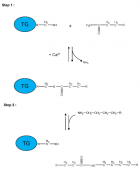
Figure 2

Figure 3
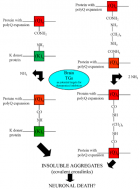
Figure 4

Figure 5
Similar Articles
-
Transglutaminase inhibition: possible therapeutic mechanisms to protect cells from death in neurological disordersVittorio Gentile*,Elenamaria Fioretti,Nicola Gaetano Gatta,Rosaria Romano. Transglutaminase inhibition: possible therapeutic mechanisms to protect cells from death in neurological disorders . . 2017 doi: 10.29328/journal.hjbm.1001004; 1: 026-038
Recently Viewed
-
Treatment Outcome in Patients with Myofascial Orofacial Pain: A Randomized Clinical TrialAnders Wänman*, Susanna Marklund, Negin Yekkalam. Treatment Outcome in Patients with Myofascial Orofacial Pain: A Randomized Clinical Trial. J Oral Health Craniofac Sci. 2024: doi: 10.29328/journal.johcs.1001046; 9: 001-008
-
Hygiene and Care Protocols for Implant-supported Dental Prostheses in Patients with DiabetesHakob Khachatryan, Emma Boshnaghyan, Sevak Papoyan, Gagik Hakobyan*. Hygiene and Care Protocols for Implant-supported Dental Prostheses in Patients with Diabetes. J Oral Health Craniofac Sci. 2024: doi: 10.29328/journal.johcs.1001047; 9: 009-014
-
Advancing Oral Health and Craniofacial Science through Microchip ImplantsShekufeh Shafeie*. Advancing Oral Health and Craniofacial Science through Microchip Implants. J Oral Health Craniofac Sci. 2024: doi: 10.29328/journal.johcs.1001048; 9: 015-018
-
Texture Analysis of Hard Tissue Changes after Sinus Lift Surgery with Allograft and XenograftMohammad Azimzadeh, Farzad Esmaeili, Narges Bayat, Kasra Rahimipour, Amir Ebrahimpour Tolouei*. Texture Analysis of Hard Tissue Changes after Sinus Lift Surgery with Allograft and Xenograft. J Oral Health Craniofac Sci. 2024: doi: 10.29328/journal.johcs.1001049; 9: 019-022
-
Awareness and Knowledge of Specialists/Trainers and General Dental Practitioners about Medical-Related Osteonecrosis of the JawsAbdulhamit Taha Koca,Mustafa Bayhan,Yunus Ayberk Demir,Ayse Zeynep Zengin*. Awareness and Knowledge of Specialists/Trainers and General Dental Practitioners about Medical-Related Osteonecrosis of the Jaws. J Oral Health Craniofac Sci. 2024: doi: 10.29328/journal.johcs.1001050; 9: 023-031
Most Viewed
-
Evaluation of Biostimulants Based on Recovered Protein Hydrolysates from Animal By-products as Plant Growth EnhancersH Pérez-Aguilar*, M Lacruz-Asaro, F Arán-Ais. Evaluation of Biostimulants Based on Recovered Protein Hydrolysates from Animal By-products as Plant Growth Enhancers. J Plant Sci Phytopathol. 2023 doi: 10.29328/journal.jpsp.1001104; 7: 042-047
-
Sinonasal Myxoma Extending into the Orbit in a 4-Year Old: A Case PresentationJulian A Purrinos*, Ramzi Younis. Sinonasal Myxoma Extending into the Orbit in a 4-Year Old: A Case Presentation. Arch Case Rep. 2024 doi: 10.29328/journal.acr.1001099; 8: 075-077
-
Feasibility study of magnetic sensing for detecting single-neuron action potentialsDenis Tonini,Kai Wu,Renata Saha,Jian-Ping Wang*. Feasibility study of magnetic sensing for detecting single-neuron action potentials. Ann Biomed Sci Eng. 2022 doi: 10.29328/journal.abse.1001018; 6: 019-029
-
Pediatric Dysgerminoma: Unveiling a Rare Ovarian TumorFaten Limaiem*, Khalil Saffar, Ahmed Halouani. Pediatric Dysgerminoma: Unveiling a Rare Ovarian Tumor. Arch Case Rep. 2024 doi: 10.29328/journal.acr.1001087; 8: 010-013
-
Physical activity can change the physiological and psychological circumstances during COVID-19 pandemic: A narrative reviewKhashayar Maroufi*. Physical activity can change the physiological and psychological circumstances during COVID-19 pandemic: A narrative review. J Sports Med Ther. 2021 doi: 10.29328/journal.jsmt.1001051; 6: 001-007

HSPI: We're glad you're here. Please click "create a new Query" if you are a new visitor to our website and need further information from us.
If you are already a member of our network and need to keep track of any developments regarding a question you have already submitted, click "take me to my Query."








